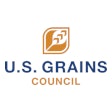
European Union (EU) wheat exports for the 2023/24 marketing year have been revised downward by 2.0 million tons to 34.5 million in the latest United States Department of Agriculture (USDA) Foreign Agricultural Service (FAS) April 2024 Grain: World Markets and Trade Report. This is due to increasing competition from Russia in key markets such as Africa and the Middle East. During the first seven months of the marketing year, EU shipments to North Africa fell by 25 percent, and those to the Middle East plummeted by more than 60 percent compared to the previous year.
Russia's aggressive export strategy, backed by record wheat supplies, has significantly undercut EU's market position, pushing Russian wheat export forecasts up by 1.0 million tons to a record 52.0 million tons this month. Key traditional EU markets, including Saudi Arabia and Algeria, have shifted significantly towards Russian wheat due to its competitive pricing.
In Saudi Arabia, where the EU once dominated with a nearly 95 percent market share up until the 2019/20 period, the Global Food Security Authority (GFSA), the sole importer of wheat, has now favored Russian wheat. This shift has been influenced by a decline in Saudi wheat import demand due to higher domestic production and procurement prices, alongside Russia's advantageous pricing in international tenders.
Similarly, in Algeria, a shift in government policy in 2020 to relax import restrictions on insect-damaged grain has allowed for increased imports from the Black Sea region, notably Russia. The Office Algérien Interprofessional des Céréales (OAIC), Algeria's sole wheat importer, has moved away from its traditional reliance on EU wheat, reducing the EU's market share from 85 percent five years ago to a more competitive level this year.
These market dynamics underscore a significant realignment in global wheat trade, with Russian wheat becoming increasingly preferred in traditional EU markets due to its price competitiveness and abundant supply.


















